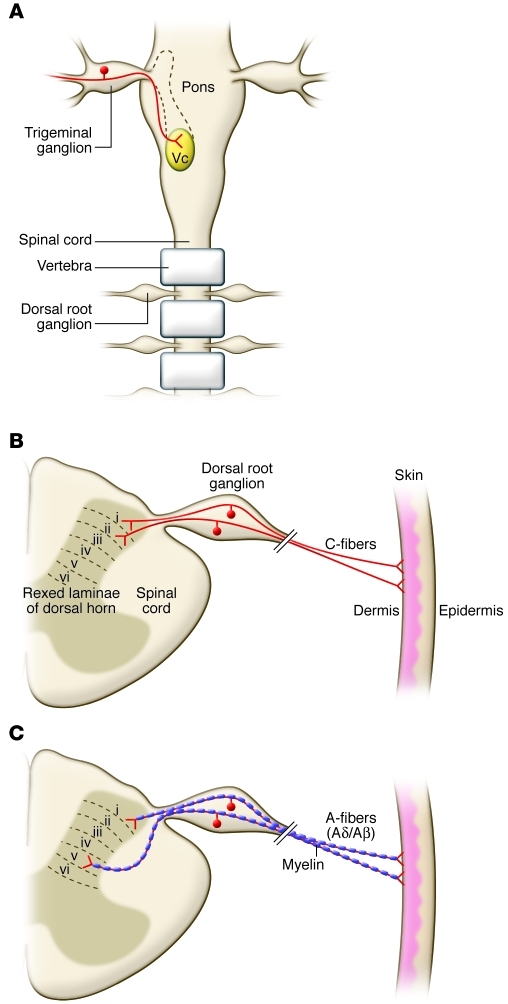Multidimensional Nature of Pain
- Please do not edit unless you are involved in this project, but please come back in the near future to check out new information!!
- If you would like to get involved in this project and earn accreditation for your contributions, please get in touch!
Tips for writing this page:
Define acute and chronic pain terms of a multidimensional pain experience.
- Anatomical, physiological, and psychological basis of pain and pain relief, including pain as an 'output' from the brain
- Definition of pain and evidence of the multidimensional nature of the pain experience e.g. social and psychological infleuncing factors
Original Editor - Alberto Bertaggia.
Top Contributors - Alberto Bertaggia, Nina Myburg, Admin, Kim Jackson, Michelle Lee, Vidya Acharya, 127.0.0.1, WikiSysop, Lauren Lopez, Jo Etherton and Jess Bell
Introduction[edit | edit source]
A definition of pain is provided by the International association for the Study of Pain (IASP) as follows[1]:
"An unpleasant sensory and emotional experience associated with actual or potential tissue damage, or described in terms of such damage"
Pain is always subjective and everyone learns the use of this word through experiences related to injury in early life.
It is a sensation in a part or parts of the body, but it is also always unpleasant and therefore also emotional.
Even in the absence of tissue damage or any likely pathophysiological cause, people still report pain; usually this happens for psychological reasons. In these cases, it is challenging to distinguish whether their experience arise from a damaged tissue or not, based only upon the subjective report[2].
It is important to underline that activity induced in the nociceptor and nociceptive pathways by a noxious stimulus is not pain[2], which is always the output of a widely distributed neural network in the brain rather than one coming directly by sensory input evoked by injury, inflammation, or other pathology[3].
In the following video Karen D. Davis tries to explain why do some people react to the same painful stimulus in different ways.
Relevant anatomy and physiology[edit | edit source]
Nociceptors[edit | edit source]
Nociceptors (from the latin nocere = to hurt) are sensory receptors which detect signals from damaged tissue or the threat of damage and indirectly also respond to chemicals released from the damaged tissue. There are free nerve endings present in many types of tissues, and cell bodies located in the dorsal root ganglions or in the cranial nerve ganglia.

Sub Heading 3
[edit | edit source]
Add text here...
References[edit | edit source]
- ↑ IASP Taxonomy - IASP [Internet]. [cited 2016 Mar 18]. Available from: http://www.iasp-pain.org/Taxonomy#Pain
- ↑ 2.0 2.1 Merskey H, Bogduk N. Classification of Chronic Pain: Descriptions of Chronic Pain Syndromes and Definitions of Pain Terms. IASP Press; 1994. 248 p.
- ↑ Melzack R. Pain and the neuromatrix in the brain. J Dent Educ. 2001 Dec;65(12):1378–82.






